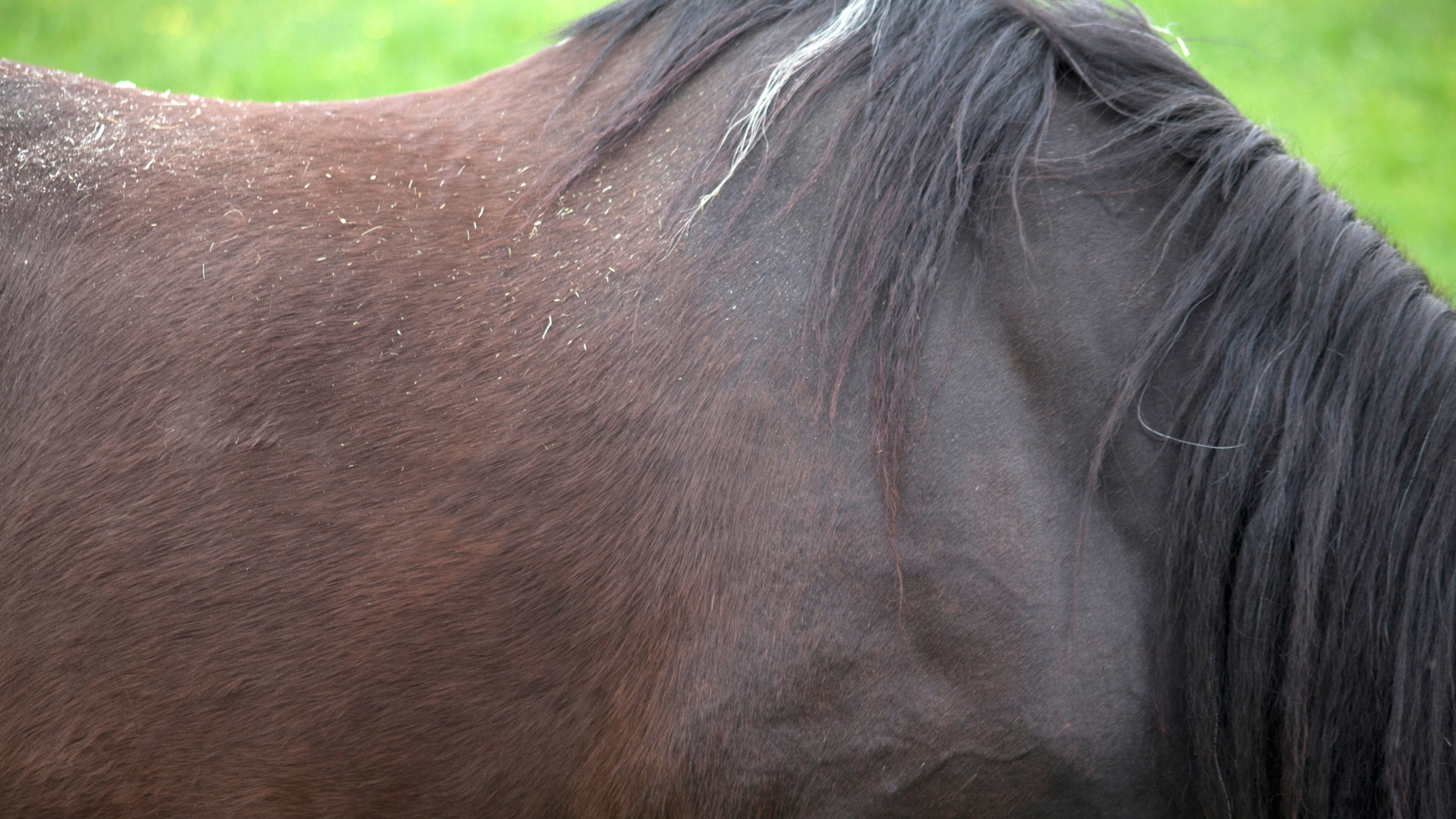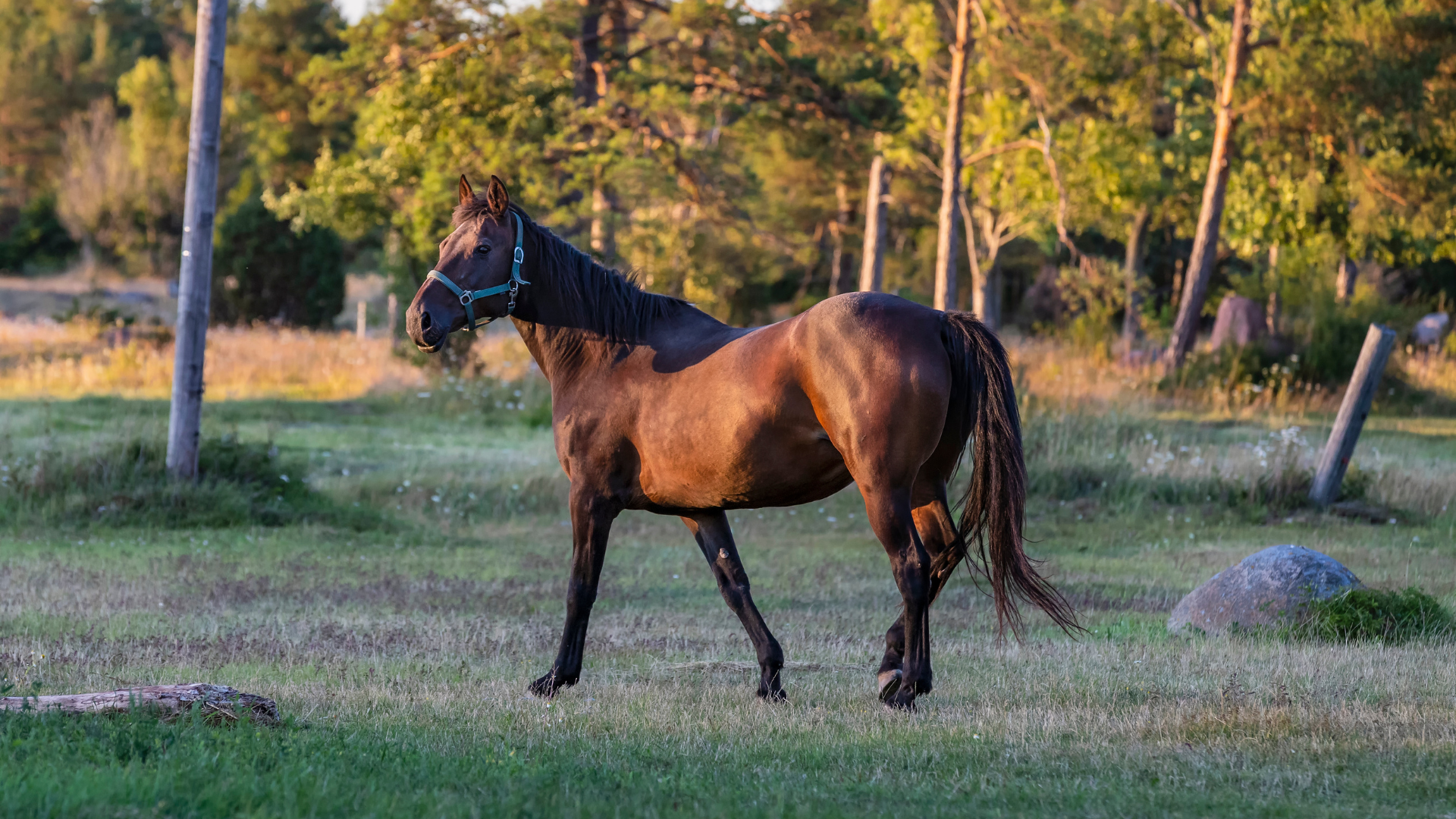
The coat change in horses: A comprehensive guide to support
The horse's coat change is a demanding phase in the horse's annual cycle and requires special attention in horse care. During this time, the horse either changes from a thick winter coat to a light summer coat or vice versa. For horse owners, this means additional care, an adjustment of feeding and an understanding of the increased nutritional needs that the body has during this process. Well-thought-out horse care is particularly important during the coat change in order to relieve the animal's metabolism and prevent skin problems.
The coat change is not only a visual change, but also a significant strain on the horse's metabolism. Below we explain in detail what happens during the coat change, what challenges can arise and how you can best support your horse with the right care.

The coat change in horses – a biological process
The shedding of a horse's coat is mainly controlled by the length of daylight hours. As the days get longer in spring, the production of melatonin, a hormone produced in the pineal gland that affects hair cycles, decreases. As a result, the horse begins to shed its thick winter coat or winter fur and develop thinner hair for the warmer months. This process can also be observed in autumn, but in the opposite direction: the shortening days stimulate the formation of winter fur, which protects the horse from low temperatures during the cold season.
Coat cycles do not depend on temperatures, but are regulated by light. During the coat change, the horse's body has to work hard to shed the old hair and grow new hair. Especially in spring, when the thick winter coat is shed, this process requires a lot of energy and can take several weeks or even months. The transition from summer to winter coat in autumn is usually less strenuous, as less hair is usually produced.
Metabolism and its importance in the change of coat
The horse's metabolism plays a crucial role during the coat change. To form new coats, the body needs many nutrients, especially proteins, vitamins and trace elements. These substances are responsible for the production of keratin - the main component of hair, hooves and skin. The high nutrient requirements during the coat change require an adapted feeding that ensures that the horse has all the necessary nutrients available in sufficient quantities.
Older horses in particular or those with metabolic disorders often have problems managing the coat change smoothly. An inadequate supply of nutrients can lead to a slow or incomplete coat change. The horse then often looks dull, the coat is dull and flaky and skin problems can occur.
Why does the coat change take different lengths of time in horses?
The length of time it takes for the coat to shed depends on a number of factors. Horses kept outdoors often develop a thicker coat in the winter, which takes longer to shed completely in the spring. This longer duration is due to the fact that a denser winter coat requires more energy and time to be replaced by a lighter summer coat.
The breed also plays an important role: robust breeds such as Icelandic horses or Shetland ponies tend to have a denser winter coat and therefore need more time to change their coat.
The age and general health of the horse also influence the speed of this process. Young and healthy horses often go through the coat change more quickly and without problems than older animals or horses with health problems, in which the coat change can take longer.
The nutritional requirements during the coat change – what does your horse need?
During the coat change, your horse's need for nutrients increases significantly. Proteins, which are needed for the production of keratin, are now particularly essential. A protein-rich diet ensures that the horse has enough building blocks to build new hair. But other nutrients also play an important role:
-
Biotin : Biotin is known for its positive effects on hair and hoof quality. It supports the production of keratin and thus promotes the healthy growth of fur and hooves during the shedding period.
-
Zinc : Zinc is essential for skin metabolism and contributes to the regeneration of skin cells. A zinc deficiency can lead to skin problems and delayed coat change.
-
Selenium : Selenium has an antioxidant effect and protects the horse's cells from damage caused by free radicals. It also supports the function of the immune system, which is particularly challenged during the coat change.
-
Copper : Copper is necessary for the formation of collagen and coat pigmentation. A deficiency can lead to dull, lackluster coat and skin problems.
Feeding during the coat change – How to support your horse optimally
During the coat change, you should adjust your horse's feeding to the increased nutrient requirements. A high-quality basic diet consisting of sufficient roughage and, if necessary, concentrated feed forms the basis. In addition, it can be useful to feed targeted supplementary feed that is rich in biotin, zinc, copper and essential amino acids.
Omega-3 fatty acids in particular, which are found in oils such as linseed oil or hemp oil, support the health of the skin and coat and have an anti-inflammatory effect. These fatty acids help to keep the coat shiny and supple and promote general hair care.
However, make sure to tailor the feeding to your horse's individual needs, as each animal reacts differently to the additional nutrients.
Do you already know our coat change box? Our coat change box contains everything your horse needs during the coat change to simplify this process. This includes our zinc pellets , our biotin liquid and our liver-kidney liquid .
Challenges and problems during the coat change
Some horses have greater difficulty managing the coat change smoothly. Horses with metabolic diseases such as Equine Cushing's Syndrome (ECS) in particular often have a delayed or incomplete coat change. These horses often retain their winter coat and develop a long, shaggy coat that does not shed naturally.
Another common problem is skin irritation, which can occur during the shedding period. Dandruff, itching and bald patches are signs that the shedding period is not going well and that there may be a nutritional deficiency or a skin disease.
Grooming during the shedding season – tips and tricks
Good hair care is essential during the shedding period. Regular brushing helps to remove loose hair and promote blood circulation to the skin, which supports shedding. Use brushes with different degrees of hardness to clean the coat thoroughly and use massage brushes to stimulate blood circulation. Special shampoos can also be helpful, especially for horses that are prone to dandruff or skin problems.
Daily brushing ensures that dead hair is removed quickly and effectively, which stimulates the skin's metabolism and speeds up the coat change. In addition, hair care strengthens the bond between you and your horse and ensures that you can detect skin changes early.
Special support for older horses
Older horses often have a slower metabolism, which makes coat change more difficult. These animals particularly benefit from targeted feeding that is tailored to their increased nutritional needs. High-quality supplementary feed with biotin, zinc, selenium and omega-3 fatty acids can help older horses to cope better with coat change. Also pay attention to intensive coat care to avoid skin problems.
When is a visit to the vet necessary?
If your horse has problems shedding its coat over a long period of time or is showing signs such as severe itching, bald patches, dandruff or unexplained weight loss, you should consult a veterinarian. There may be a metabolic disorder or nutritional deficiency that needs to be treated.
The veterinarian can perform a blood test to determine which nutrients may be missing and recommend targeted treatment.
Conclusion on coat change in horses
The shedding of a horse is a challenging phase that requires a lot of care and attention to ensure the animal's well-being. During this time, the horse's nutritional needs are increased because the body needs energy and essential nutrients to shed the old coat and grow new one. A balanced diet rich in vitamins, minerals and proteins is therefore essential. Supplementary feed containing biotin, zinc and high-quality proteins can also support the shedding of a horse and help to promote the health of the skin and coat.
In addition to nutrition, regular hair care also plays an important role. Daily brushing removes loose hair, promotes blood circulation in the skin and stimulates the metabolism. This makes coat change easier and reduces the risk of skin irritation or other problems.
It is important to always be alert to signs of trouble, such as delayed coat change, dull coat or skin problems. If you react early and take targeted measures, you can help your horse to make this stressful phase as comfortable as possible.























